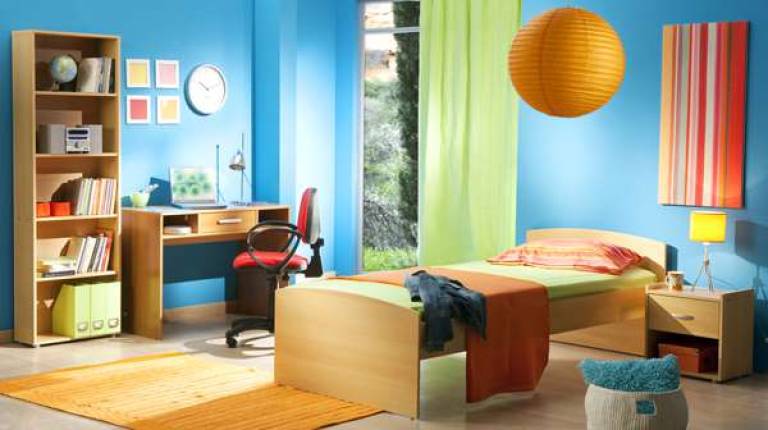Kids' bedroom oases should reflect their personalities

Parents, do you want your kids' bedrooms to be relaxing oases where they can decompress and escape the academic and social pressures of school? Don't assume that means muted colors and quiet sanctuary.
Instead, designers say, let the room reflect your child's personality, even if that involves some more vibrant colors and patterns.
“Many parents find that hot pink walls are better than hot pink hair, right? And it's only a bucket of paint. Such a space allows kids to be themselves.
WHAT'S THE ROOM FOR?
A first step to creating a great space for kids is defining what purposes the room must serve, Katillac said. Most kids do more than sleep in their rooms. They play, do homework and entertain friends there. Delineate a place for each of the room's main functions, she said.
If a child intends to study in the room, supply a desk, chair and good lighting. Create a reading nook for the bookworm. For the kid who likes to have friends over, provide a seating area -- even if it's just cushions and a rug -- and have mood lighting or even decorative string lighting.
Defining separate areas helps kids relax because it creates a sense of structure, Katillac said.
FINDING THE RIGHT COLORS
Wall color can impact your mood, said Sue Wadden of Sherwin. She recommends avoiding primary colors in favor of more natural or neutral tones like greens, browns, light grays or soft blues.
“It's easier on the eye,'' she said. “It's easier on the brain.''
To promote relaxation, consider using softer or less saturated versions of the bright colors typically used in kids' rooms, she added. If you're concerned that your child's color choices could get too bold, pick several colors you could live with and let them select from those, Wadden suggested.
You can also use other elements to add the pops of color that kids crave. Consider painting a colorful accent wall, or adding a vibrant rug or patterned comforter.
“Bring in brighter tones with secondary pieces,'' Wadden said.
BRING IN THEIR INTERESTS
Let your child help choose the room's theme, said Janet Paik, an editor with the online interior decorating website Houzz.com. “If you want it to feel like their personal sanctuary, it needs to be their own space,'' she said.
It can be easy and inexpensive to incorporate a favorite hobby, sports team or activity into the room.
Decals, bedding, artwork and accessories can highlight a child's interests, and are easy to change out as they get older, said Melisa White of Melisa White Interiors in New York.
Writable surfaces such as chalkboard paint or large marker boards also let kids customize their room.
MONITORING SCREENS
Ideally, the room should be media-free at bedtime, Turgeon said.
Create a communal charging station where the entire family charges electronics someplace other than bedrooms, she suggests.
“Have everybody say good night to their devices at least an hour before bedtime,'' she said.
If children keep a computer in their room, try to separate it visually from the sleep space with a bookshelf, curtain or another creative design idea.
SURROUND KIDS WITH WHAT THEY LOVE
Consider including a shelf or bulletin board where kids can display items important to them, she said. When Katillac was working with a teenager who collects shoes, she put in shelving where he could set out some of his favorite pairs. That not only kept things orderly; it created a meaningful vignette in the room. “Kids are very vocal about the things they like,'' Katillac said. “Look at their interests and see if you can turn it into a piece of artwork.''
EVERYTHING IN ITS PLACE
Provide bins, shelving and storage that children can reach to take out and put away their things, White said. Everyone enjoys a tidy room: “Clutter can cause anxiety, although children may not understand that,'' she said.
An organized room will help children relax, agreed Heather Turgeon, co-author of “The Happy Sleeper: The Science-Backed Guide to Helping Your Baby Get a Good Night's Sleep - Newborn to School Age'' “A lot of clutter and toys can keep kids' minds activated, the same way having an office desk in your room or a pile of stressful papers beside your bed might do for you,'' said Turgeon, a psychotherapist.